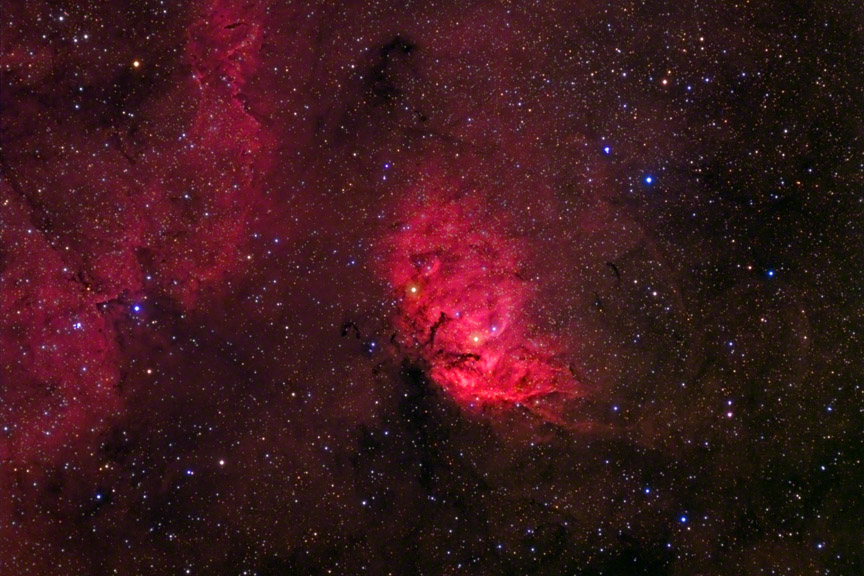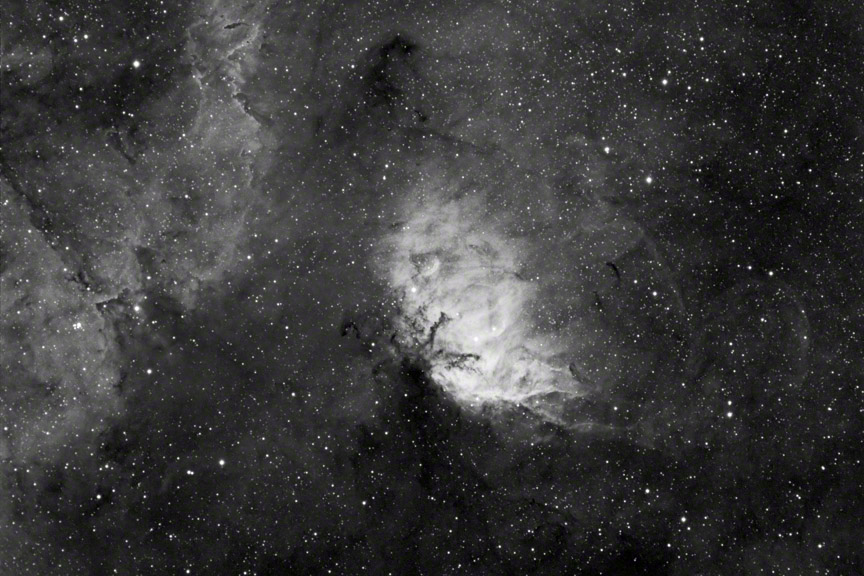

| 
|

The Tulip Nebula is a Hydrogen II emission nebula in the constellation Cygnus. Also faintly visible is a shock front formed by a jet from microquasar Cygnus X-1. The shell is marked on the image below.
120 minutes L and 120 minutes RGB on 2017-10-27 plus 224 minutes H-a using an Astrodon 3 nm H-a filter on 2017-10-20 (blended with L and R), all using a QSI 583 from northern New Jersey through an Astro-Physics 155mm refractor at f6.1. North is up. ©2017

The Tulip Nebula in narrowband hydrogen-alpha light. The edge of the shell formed by the jet from Cygnus X-1 is marked in red. Cygnus X-1 is the brightest x-ray source in our galaxy. It is thought to be a binary star system comprising a supergiant star orbiting a black hole. The system is classified as a microquasar. Matter falling into the black hole from the supergiant swirls in a disk around the black hole, generating two jets of matter that are ejected at near-relativistic speed along the disk's axes, shown marked in blue. Cygnus X-1 is the bright star in the middle of the jets. The upper jet plows into interstellar material and pushes it into a shock front, shown marked in red. The lower jet jet doesn't produce a corresponding shell because it is facing a lower density region of the interstellar medium. The jets themselves aren't visible because they don't radiate visible light. Compare this image to the unannotated one shown below.
224 minutes H-a using an Astrodon 3 nm H-a filter on 2017-10-20 using a QSI 583 from northern New Jersey through an Astro-Physics 155mm refractor at f6.1. Marked with color annotations. North is up. ©2017

The Tulip Nebula in narrowband hydrogen-alpha light. Also faintly visible is a shock front formed by a jet from microquasar Cygnus X-1. The shell is marked on the image above.
224 minutes H-a using an Astrodon 3 nm H-a filter on 2017-10-20 using a QSI 583 from northern New Jersey through an Astro-Physics 155mm refractor at f6.1. North is up. ©2017
| |||||||||||||||||
|
Astrophotography Books – Astronomy Books |








